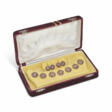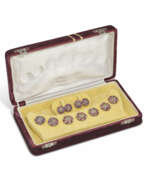Synthetic ruby

Synthetic ruby
Synthetic ruby is a lab-created gemstone, sharing the same chemical composition and physical properties as natural rubies. Developed in the early 1902s by French chemist Auguste Verneuil, the Verneuil process involves melting powdered aluminum oxide and chromium oxide to create stunning synthetic rubies through a flame fusion technique.
Renowned for their vibrant red hues and clarity, synthetic rubies have become popular in both the jewelry industry and various technological applications. Their controlled creation process ensures fewer inclusions compared to natural rubies, making them visually appealing and ideal for high-precision uses such as laser technology. Moreover, their affordability and ethical production make them a sustainable choice for many consumers.
Synthetic rubies not only replicate the beauty of natural rubies but also offer a responsible alternative, minimizing environmental impact and avoiding the depletion of natural resources. Collectors and art enthusiasts can appreciate the craftsmanship and precision involved in their creation.
For updates on new product sales and auction events related to synthetic rubies, sign up for our newsletter.
| Country: | America, Asia, Australia, Europe, France |
|---|---|
| Start of the period: | 1902 |

